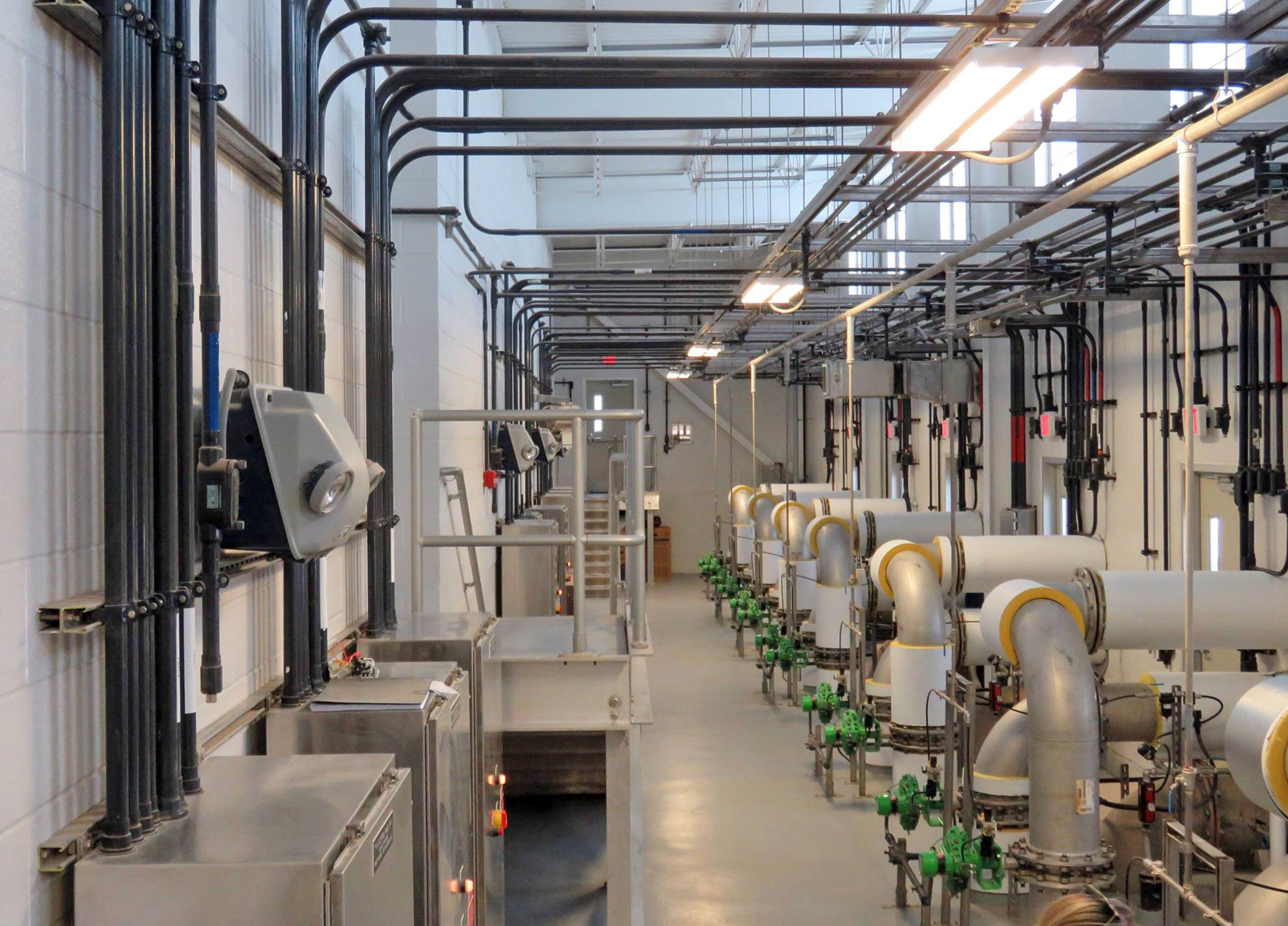On July 10, after a decade of planning and construction, wastewater was introduced to the newly commissioned membrane bioreactor at the Cox Creek Water Reclamation Facility. With some of the most stringent water quality standards imposed on the design, the achievement of this major milestone will dramatically reduce the pollutants the plant releases into the Chesapeake Bay. Nitrogen discharge will be reduced by 1,650,000 pounds per year, phosphorus discharge will decrease from 3.0 mg/L to 0.3 mg/L, and solids handling will be relieved by 6,900 tons per year.
Originally commissioned in 1956, Cox Creek WRF is the County’s oldest and largest wastewater treatment facility. Average daily flow is 15 mgd, with design peak flows at 45 mgd. Three miles southeast of Baltimore, Maryland, the plant is situated on 29.31 acres and is surrounded by two power plants, wetlands and surface waters, leaving minimal space for expansion. The solution was the construction of a membrane bioreactor provided by GE Water Technologies, which allows for optimum treatment quality in about a quarter of the space.
The membrane bioreactor includes eight parallel trains of hollow fiber membranes with an attached 80 mgd vertical turbine mixed liquor return pump station. The hollow fiber membranes consist of 1,300 miles of fiber. Stretched end to end, the membranes would run from New York City to Miami. The pore size of the fibers are 0.04 microns. For reference, the human hair is 90 microns, an oil droplet is 20 microns, and E.coli bacteria is 1 micron.
Since 2010, PC was awarded the contracts for all four phases of construction. Phase 1, completed in 2013, consisted of the construction of two new primary clarifiers and the rehabilitation of four existing primary clarifiers, as well as relocation of existing utilities in preparation for the construction of the membrane project. Phase 2 includes the construction of the membrane bioreactor system, fine screen building, reactors, a parallel high-flow treatment system for flows over 30 mgd and other ancillary equipment. Phase 3 is a rehabilitation of headworks, effluent treatment processes and the addition of plant-wide odor control. The fourth phase of work, completed in 2015, included the construction of a 4,200-square-foot office and maintenance shop for plant operations staff. PC has self-performed roughly 650,000 manhours at this facility. The total capital investment is reported to exceed $140 million, and is the largest capital improvement project in the County’s history.

